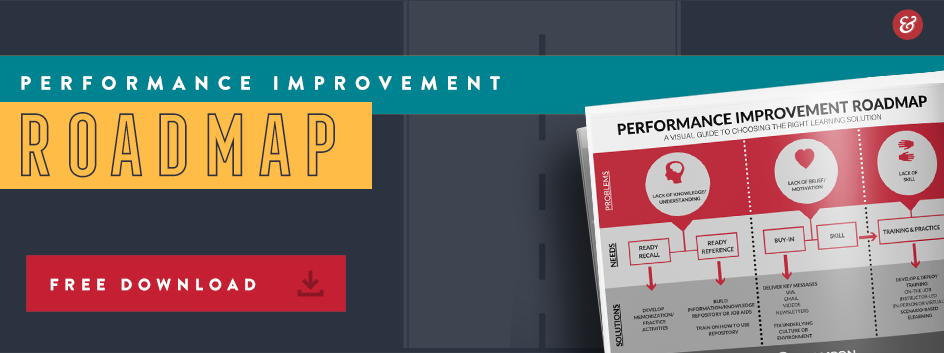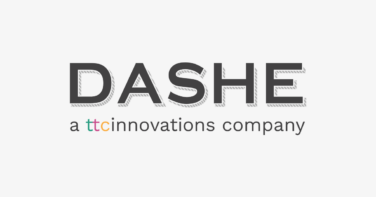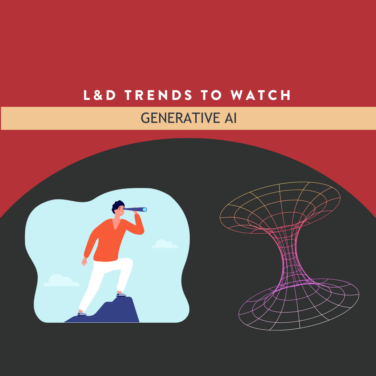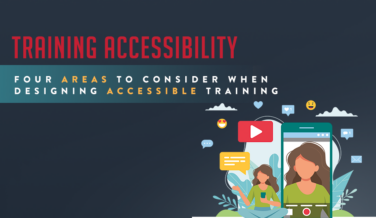A New Trend in 2023: Learning In The Moment Of Need
Many of us are familiar with the training style “Learning in the Flow of Work.” For those of you who are not familiar with this training style take a look at one of Dashe’s blogs on “Learning in the Flow of Work.” This style will not be dismissed but instead will be enhanced with another style “Learning in the Moment of Need.” This will be a huge trend in 2023 and it has many benefits that will change the way L&D creates training modules. The moments of need focus on the learner, their situations, the skills that are needed to perform their jobs, and how to benefit them throughout their journey in an organization.
The Five Moments of Need
The “Five Moments of Need” was developed by Bob Mosher and Conrad Gottfredson. These are the moments when a learner needs certain information in order to perform their jobs more efficiently and effectively. These moments allow the learners to enhance and increase their knowledge and skills. Each moment of need should be viewed as an opportunity to improve one’s skillset and learn new and better ways to perform their jobs.
- Learn New
This first moment of need is self-explanatory, it is the process of learning something new to enable the learner to exceed in their position. This can be done with eLearning courses, training events, team challenges, or any form of education. It is important that the method you chose to train the learner is focused on building NEW skills and knowledge. This is not the time to enhance or change the skills and knowledge that they already have. It is also important that the learner understands the importance of these new skills. If they do not understand why or how important this new training is, they will not retain the information. Another aspect to consider is having this new training be independent, something they can complete on their own and at their own pace. This will create the urgency of need in their mind, and it will encourage them to do something for themselves, for their benefit.
Learn More
This moment of need is where you can expand on the learner’s skillset they already possess. They now have the ability to build off the knowledge and skills they have already been taught, and this can encourage them to move to the next level in their position. A learner might use this moment of need to move further in the organization or they might have come across a certain need in their position but did not have the tools to complete the task. You can teach this moment of need by first assessing the learners’ current knowledge through exams and surveys, then provide them with the correct training and training styles that fit them best. Also, it will be useful to have resources readily available to all employees if they would like to learn MORE on their own and have immediate access to extra knowledge.- Apply
This occurs when learners must apply information or skills that they already have. For example, if an employee is faced with a task that they cannot remember how to complete, it would be beneficial to have a manual or application for them to refer to trigger the skills they learned but may have forgotten. This moment of need happens in real time and can occur at any point throughout their time at the organization. It is important that the learners are able to access the information quickly and conveniently, so that they can get the information that is needed to perform a task almost immediately. This step should be considered at the beginning of each training module so the necessary preparations can be put into place.
Solve
This moment occurs when things go wrong, and the learners need access to the appropriate tools immediately in order to solve an issue. This can be executed with a help desk, FAQ, online forms, or immediate access to a manager. This moment of need will occur more spontaneously than any other moment of need, which means the more “helping tools” the better. If it is possible to have multiple helping tools it is important that you do so. If a problem occurs, which it will, learners will probably seek help from those around them or maybe even use a quick search to solve the problem. This is good because they are trying to solve the problem on their own and in a way, they find it fastest. This is also expanding their skillset, but it is important to have helping tools in place in case they turn to those first.- Change
This moment of need is when learners must change the way they normally perform a task or handle a situation. This is normally one of the most challenging moments of need, because the learner must unlearn a policy, skill, or procedure and relearn it with the new changes. A wonderful way to use this moment of need is by creating interactive trainings such as quizzes, games, team building exercises, or modules they complete on their own time and at their own pace. It would be a good idea to incorporate examples using the old methods in contrast with the new method so they can see why the changes are being made and how they are beneficial.

Why Will Learning in the Moment of Need be Beneficial
This new process of learning will make trainings more efficient and successful because it will be taking away all “what-if” scenarios. L&D has focused on what happens “if,” what would you do “if,” how to handle this “if.” All the “ifs” are hypothetical and there is a high probability that those “ifs” will never occur, so those trainings are wasted time. This new process will train on NEEDS, the skills will be taught based on situations that have already occurred and will provide the learner with what they WILL need. This will save an organization time and money and will have a greater return on their training modules. Their employees will receive everything they need, instead of what they might need and then never end up using. With this process we can see an increase in productivity, efficiency, reliability, and employee success. This is the start of a new and improved learning process, and it will take L&D to new levels!
Continue reading

Dashe joins ttcInnovations
Learn More
Embracing the Future: Early Adopters of Generative AI for Learning
Learn More
Four Areas To Consider When Designing Accessible Training
Learn MoreCommitted to
finding solutions
